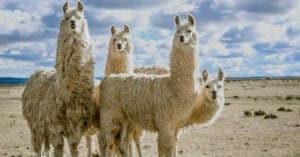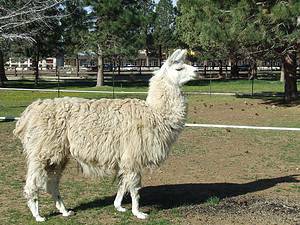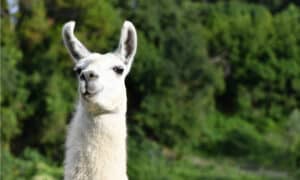
Discover 13 plants and animals native to the New World.
©YARUNIV Studio/Shutterstock.com
6 Plants Discovered in the New World
Below describes six plants discovered in the New World that Europeans brought back to their home countries, including information on when and where these plants were domesticated.
1. Tomatoes
Tomatoes originated in South America, specifically in the Andes Mountains in the present-day countries of Peru and Ecuador. Additionally, these wild tomatoes were most likely domesticated in Mexico. The word “tomato” comes from the Náhuatl word “tomatl.” Náhuatl was the language spoken by the Aztecs, and it is an indigenous language that survives in Latin America today. During the 16th century, tomatoes were most popular among the Spanish and the Italians.

The term “tomato” derives from the Náhuatl word “tomatl.”
©eugenegurkov/Shutterstock.com
2. Potatoes
While tomatoes were known to the Aztec empire, potatoes were familiar to the Inca empire. Potatoes were likely first used in agriculture some 1,800 years ago in South America. When Spain laid claim to many regions in the Americas during the 16th century, they also discovered the potato. The Spanish brought potatoes back to Europe and several European countries began cultivating the crop. One country well-known for its cultivation of the potato is Ireland, as the Irish depended greatly on the crop, resulting in the Irish Potato Famine during the 19th century.

When explorers brought potatoes back to Europe, many farmers began to cultivate the crop, particularly in Ireland.
©Hong Vo/Shutterstock.com
3. Corn
Corn is likely one of the most important plants discovered in the Americas, and the crop records a history spanning more than 10,000 years. Corn is believed to have first been cultivated in southern Mexico around 10,000 years ago. The discovery of corn by Europeans made the plant one of the most widespread and influential crops in the Americas, especially in the United States. Since corn adapts well to various environments, it can be grown from as far north as Canada or as far south as Argentina.

Native Americans first cultivated corn more than 10,000 years ago in Mexico!
©p_saranya/Shutterstock.com
4. Beans
While various beans exist throughout the world, the common bean originates in Central and South America. Additionally, several types of common beans exist, including string beans, snap beans, and bush beans. Names for types of common beans that most people are familiar with include green beans, black beans, pinto beans, and kidney beans. Furthermore, beans are a staple of Latin American or Creole dishes. However, people around the world incorporate beans into their recipes.

The common bean originates in Central and South America.
©Shailendra Pawar/Shutterstock.com
5. Cacao
Evidence from the country of Ecuador suggests that cacao was used some 5,000 years ago in the Americas. Most experts believe that the cacao plant was domesticated by Indigenous people groups above the Amazon River Basin. The Aztec, Maya, and Toltec people groups all used cacao beans to create a beverage incorporated into various cultural ceremonies. Additionally, cacao beans served as a form of currency in early Native American societies. Christopher Columbus first brought cacao beans to Spain in 1502, which were later incorporated into a popular beverage when mixed with sugar.
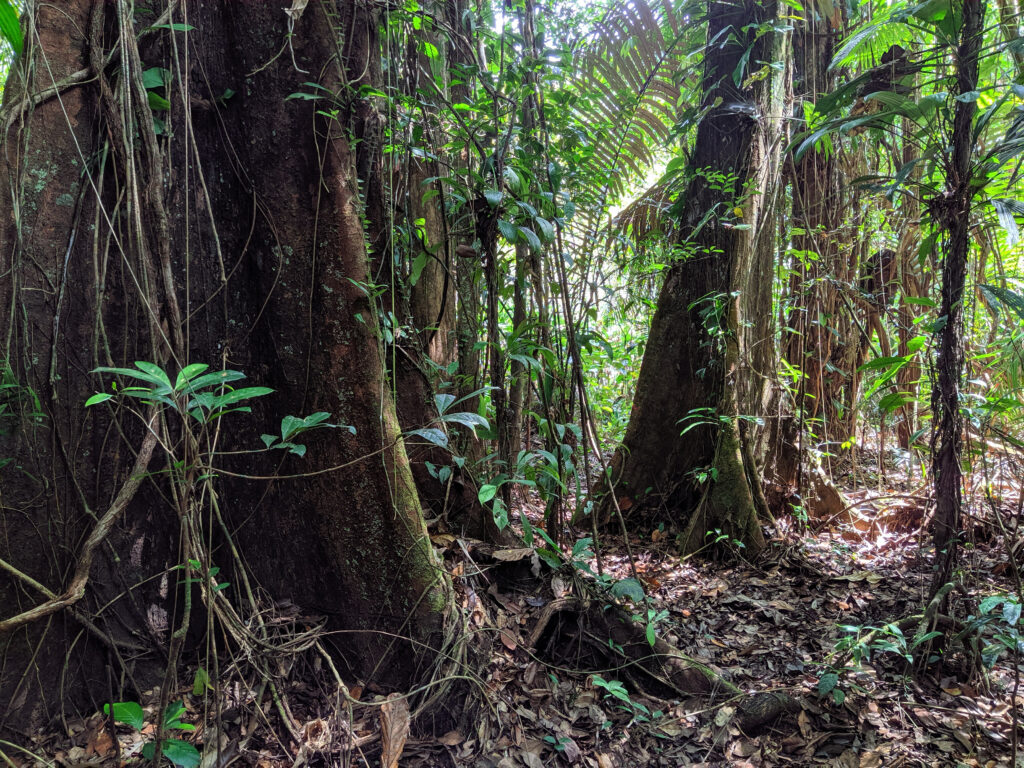
Cacao beans are the raw, unprocessed seeds found in the fruit of the cacao tree. Cacao beans are used to produce chocolate products.
©Petr Muckstein/Shutterstock.com
6. Tobacco
Tobacco is native to the Americas, including the Caribbean. Columbus first saw Indigenous people using tobacco in the Americas. They cultivated the plant, smoked it, and used it in religious ceremonies. When Europeans brought tobacco back to Europe, the plant became a massive hit. Tobacco quickly transitioned into a huge commodity in England, and it was traded throughout the remainder of Europe.

Tobacco grew significantly in popularity when it reached Europe.
©Tatyana Kalmatsuy/iStock via Getty Images
7 Animals Discovered in the New World
Below are seven animals that originated in the Americas or were discovered by Europeans in the New World, including wild and domesticated creatures.
1. Llamas
Llamas originated in the Americas some 40 or 50 million years ago. Today, these creatures are commonly found in the Andes Mountains, particularly in Peru and Bolivia. However, llamas are not wild animals. When Europeans first encountered the llama, it had already been domesticated by the Indigenous people of the Americas. Llamas stand as an example of early domestication and breeding techniques. They derive from guanacos, which are animals related to similar species like camels or alpacas. While guanacos are considered wild animals, llamas are a domesticated version of guanacos, much like how dogs are domesticated wolves.
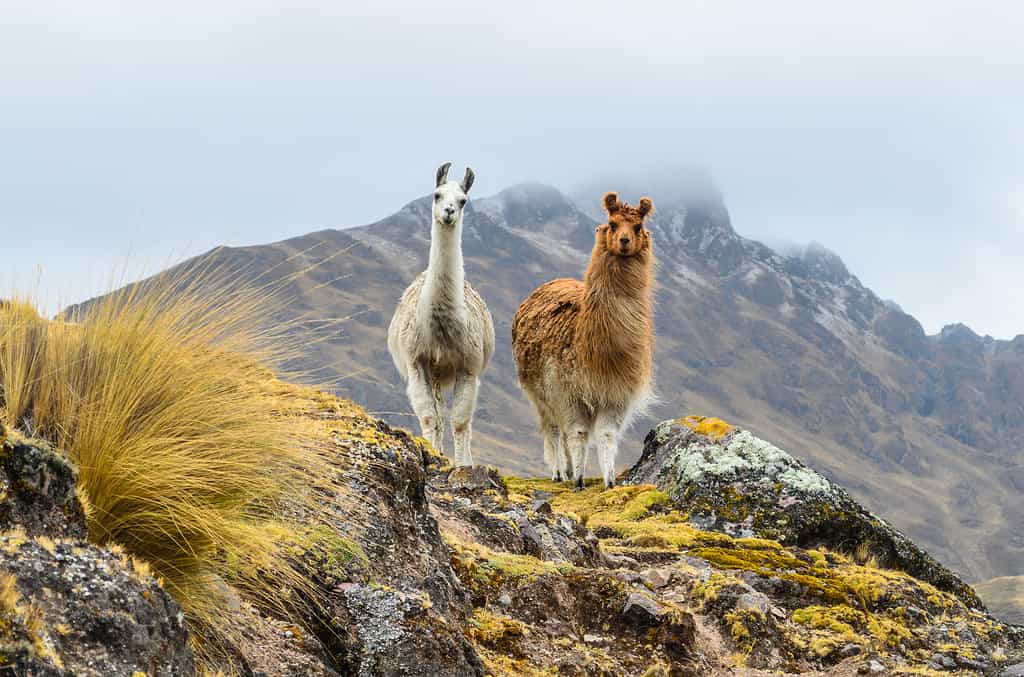
Llamas are domesticated guanacos.
©DaniCachang/ via Getty Images
2. Alpacas
Like llamas, alpacas are also not considered wild animals but have been domesticated. While llamas derive from guanacos, alpacas derive from vicuñas. The domestication of vicuñas and the creation of alpacas occurred approximately 6,000 to 7,000 years ago in the Andes Mountains. Some experts argue that both llamas and alpacas derive from guanacos, as the two animals can breed with one another and produce offspring. However, most researchers contend that vicuñas are the parent breed of alpacas.
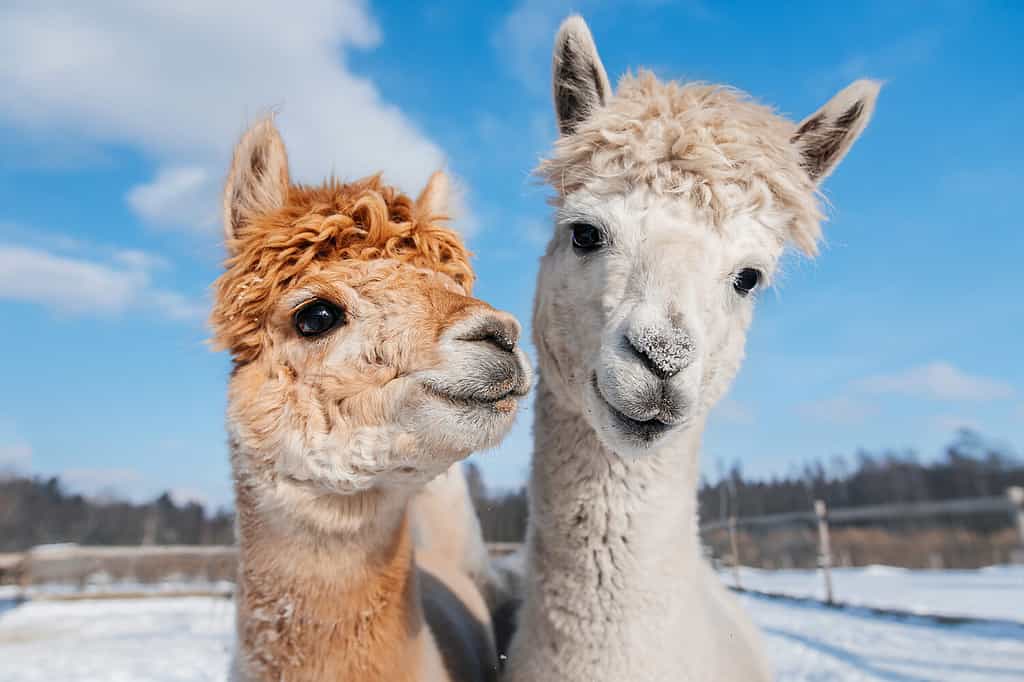
Alpacas descended from vicuñas.
©Rita_Kochmarjova/Shutterstock.com
3. Turkeys
Two types of turkeys exist, the common turkey and the ocellated turkey. Ocellated turkeys derive from Central America and are less prominent than common turkeys. The common turkey, on the other hand, is the animal that most people envision when they hear “turkey.” In sum, common turkeys are game animals and what Americans find on their Thanksgiving tables. The common turkey originates in the Americas and was most likely domesticated in pre-Colombian Mexico. The Spanish encountered wild turkeys and brought them back to Europe in 1519. Over the next two decades, the common turkey spread throughout Europe.
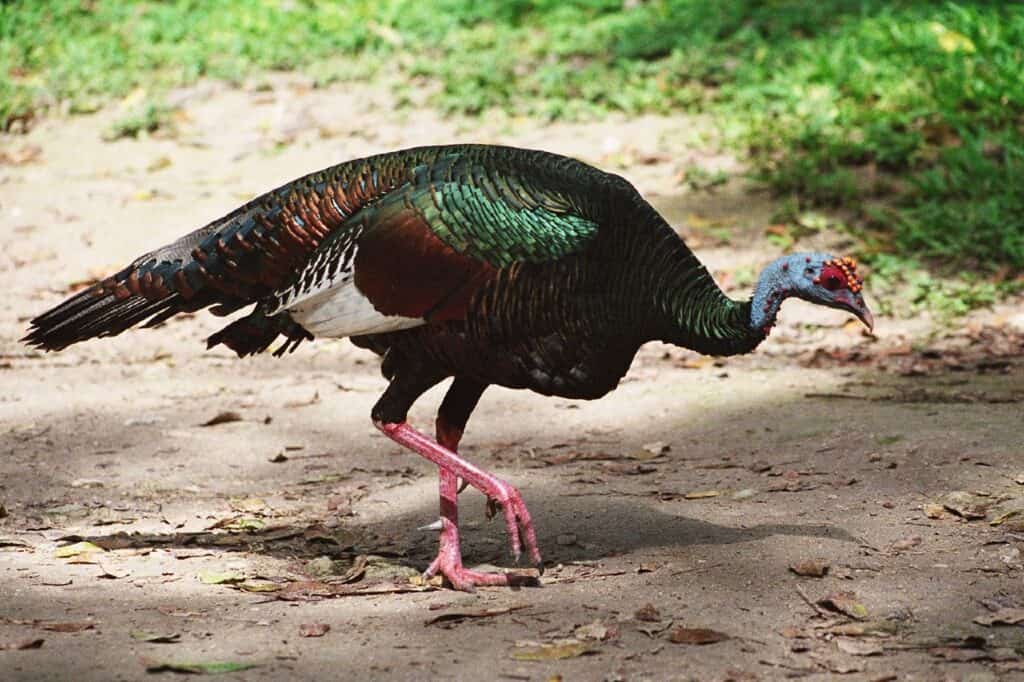
Ocellated turkeys originate in Central America, making them less prominent in the New World when compared to the common turkey.
©Bruno Girin / CC BY-SA 2.0 – License
4. Guinea Pigs
Guinea pigs derive from South America. The ancestors of modern-day guinea pigs were native inhabitants of the Andes Mountains, from Peru to Argentina. One interesting fact about wild guinea pigs is that they can live at altitudes exceeding 14,000 feet. While most people consider the guinea pig a domesticated animal or household pet, others consider the guinea pig an exquisite dish. In fact, people throughout South America eat guinea pigs similar to how Americans eat domesticated pigs or chickens.

While U.S. citizens keep guinea pigs as pets, residents of South American countries may eat guinea pigs.
©iStock.com/Tatiana Terekhina
5. Jaguar
While jaguars currently inhabit a range spanning from northern Mexico to northern Argentina, they once had a presence in the present-day southern United States and southern Argentina. Jaguars originate in the Americas, particularly in Central and South America. One interesting fact about the jaguar is that it is the largest cat in the New World. The word “jaguar” derives from the Tupí-Guaraní word “yaguar,” which means “he who kills with one leap.” Like the Indigenous language of Náhuatl, the blend of the Tupí and Guaraní languages has inspired many words used today.
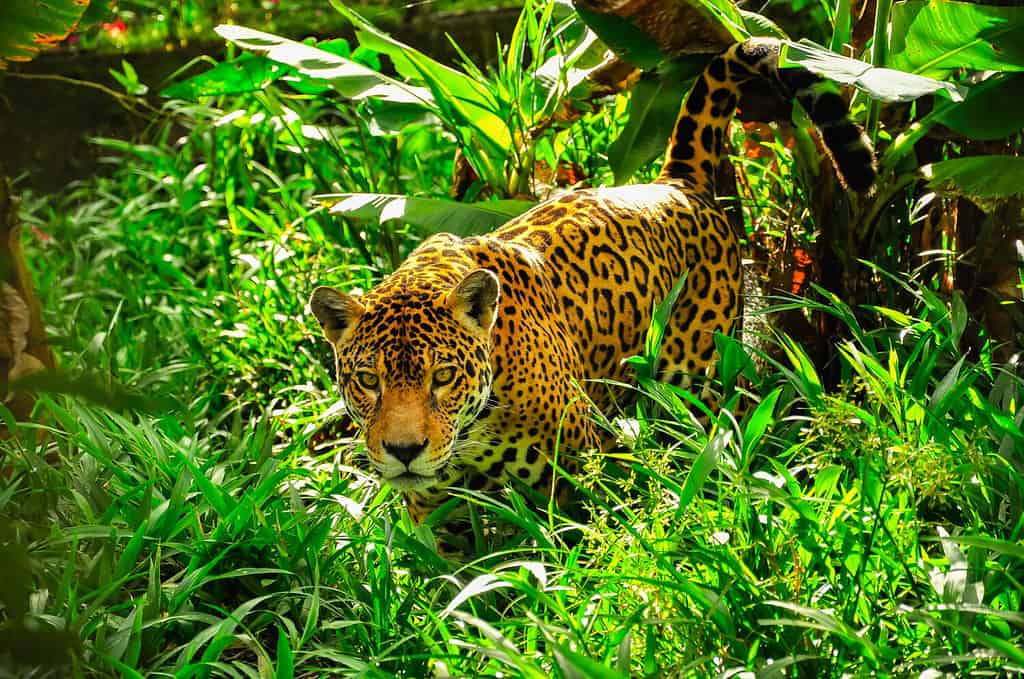
The term “jaguar” derives from the Tupí-Guaraní word “yaguar,” meaning “he who kills with one leap.”
©Jo Reason/Shutterstock.com
6. Piranha
Piranhas are native to South America, ranging from northern Argentina to Colombia. These red-eyed, sharp-toothed fish are most associated with the Amazon River, which serves as the home of 20 unique piranha species. The red-bellied piranha, for instance, is an example of one species found in the Amazon River. An interesting fact about the red-bellied piranha is that it has the sharpest teeth and strongest jaws of all piranha species.

Piranhas use their sharp teeth to tear apart the flesh of prey in feeding frenzies.
©simongee/Shutterstock.com
7. Amazon River Dolphin
While river dolphins swim in the waters of south-central Asia and China, they also reside in South America. River dolphins swim in South American rivers and coastal waters near Argentina, Uruguay, and Brazil. More specifically, Amazon river dolphins are found in the Orinoco and Amazon river basins. Unlike ocean-dwelling dolphins, such as bottlenoses, which display a gray coloration, river dolphins appear light pink or display a mix of gray and pink. Additionally, Amazon river dolphins are the largest species of river dolphin in the world.

Amazon river dolphins showcase a pink coloration.
©COULANGES/Shutterstock.com
The photo featured at the top of this post is © Terex/ via Getty Images
Thank you for reading! Have some feedback for us? Contact the AZ Animals editorial team.



